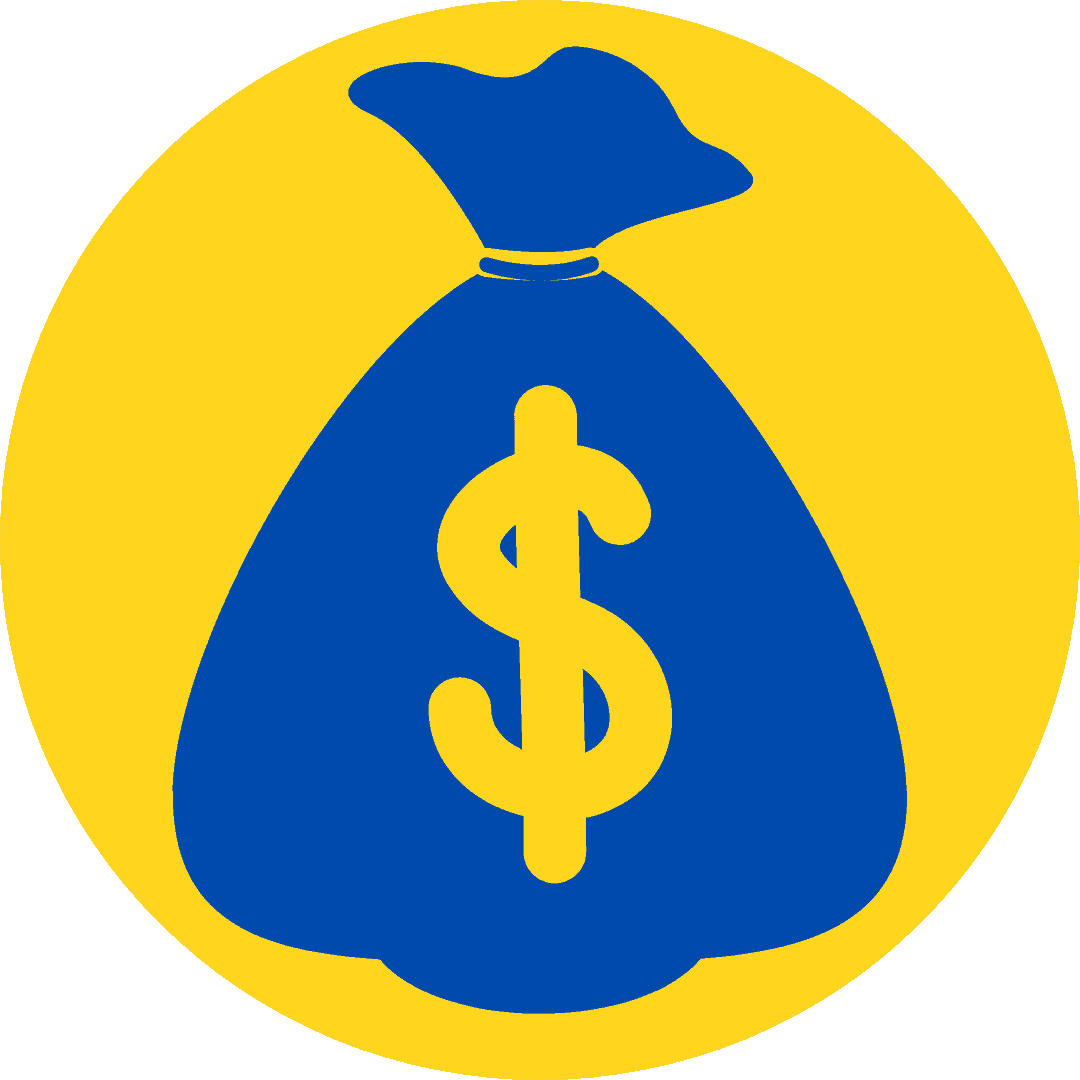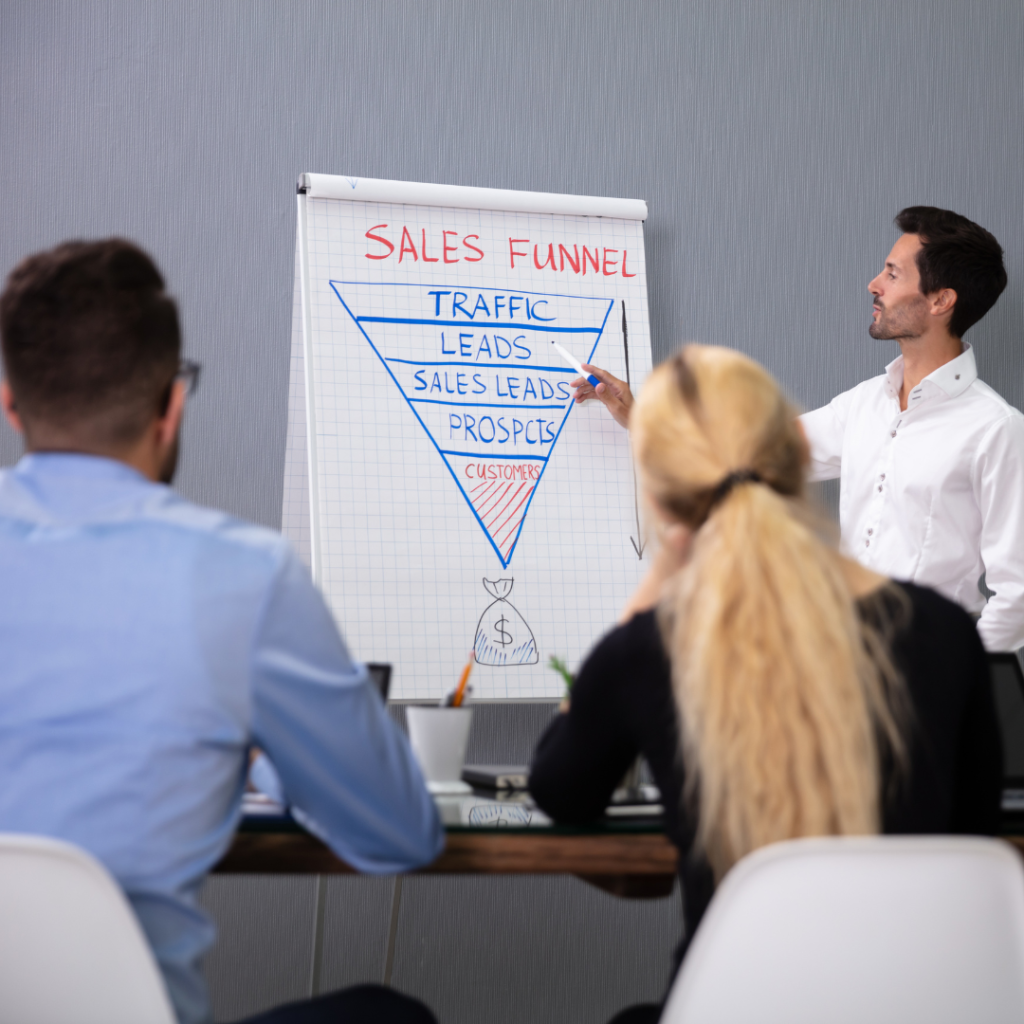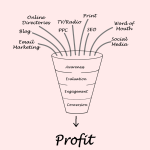Creating a sales funnel strategy involves several key steps to ensure that you attract, engage, and convert your ideal customers. Here’s a comprehensive guide to help you build an effective sales funnel tailored to your business needs.
1. Identifying Your Audience:
Understanding your target audience is the foundation of a successful sales funnel. Begin by identifying who your ideal customers are. This step involves:
- Creating Buyer Personas: Develop detailed profiles of your ideal customers. Include demographic details like age, gender, location, and occupation, as well as psychographic information such as interests, values, and pain points. For instance, if you’re selling high-end fitness equipment, your persona might be health-conscious professionals aged 30-50 with disposable income.
- Conducting Market Research: Use surveys, interviews, and data analysis tools to gather insights about your audience. Platforms like SurveyMonkey or Google Forms can help collect feedback directly from potential or existing customers. Analyzing website analytics and social media metrics also provides valuable information about user behavior.
- Segmenting Your Audience: Divide your audience into segments based on behaviors, interests, or demographics. For example, you might create segments for new visitors, repeat buyers, and high-value customers. This segmentation allows for more personalized and effective marketing strategies.
2. Mapping Out Your Funnel Stages:
The sales funnel is typically divided into four stages: Awareness, Interest, Decision, and Action. Each stage requires a tailored approach:
- Awareness: This is where you introduce your business to potential customers. Use strategies like social media ads, content marketing, SEO, and partnerships to reach a broad audience. For example, running targeted Facebook ads can help you attract users who fit your buyer personas.
- Interest: At this stage, your goal is to engage potential customers. Provide valuable content such as blog posts, educational videos, webinars, and newsletters. If you offer a digital marketing course, a well-crafted webinar can capture interest and provide a taste of your expertise.
- Decision: Potential customers are now evaluating their options. Use product comparisons, customer testimonials, free trials, and demos to demonstrate the value of your offering. Creating a comparison chart highlighting the unique features of your product versus competitors can help sway their decision.
- Action: This is where the customer makes a purchase. Simplify the checkout process, offer guarantees, and provide excellent customer support to ensure a smooth transaction. Implementing features like one-click purchasing or a hassle-free return policy can reduce friction and increase conversions.
3. Creating Content for Each Stage:
Your content should align with the specific needs of each stage of the funnel:
- Awareness Stage Content: Develop content that introduces your brand and addresses common problems or questions your audience has. This can include blog posts, infographics, social media updates, and explainer videos. For instance, a blog post titled “Top 10 Mistakes to Avoid When Starting a Business” can attract potential customers who are just beginning their entrepreneurial journey.
- Interest Stage Content: Provide more in-depth content that offers valuable insights and solutions. Consider creating eBooks, detailed guides, webinars, and email newsletters. A comprehensive guide on “How to Build a Strong Brand Identity” can nurture leads who are interested in learning more about your expertise.
- Decision Stage Content: Focus on content that helps potential customers make a decision. Use product demos, case studies, and customer reviews to build trust and credibility. A case study showcasing how your product helped a client achieve their goals can be compelling.
- Action Stage Content: Ensure that your content facilitates the final purchase decision. Use clear calls to action (CTAs), limited-time offers, and easy-to-navigate checkout pages. For example, a CTA like “Get 20% Off Your First Purchase” can encourage users to take immediate action.
4. Implementing Tools and Technology:
To manage and optimize your sales funnel effectively, leverage various tools and technologies:
- Customer Relationship Management (CRM) Systems: Tools like Salesforce or HubSpot help track interactions with potential customers and manage relationships throughout the funnel.
- Marketing Automation Tools: Platforms such as Mailchimp or Marketo automate email campaigns and follow-ups, making it easier to nurture leads through each stage of the funnel.
- Analytics Tools: Google Analytics, Hotjar, and other analytics tools provide insights into user behavior and funnel performance, allowing you to make data-driven decisions.
- A/B Testing Tools: Use tools like Optimizely or Unbounce to test different versions of your landing pages, emails, and ads to determine what works best for your audience.
5. Analyzing and Optimizing Your Funnel:
Regular analysis and optimization are crucial for maintaining an effective sales funnel:
- Monitor Funnel Performance: Track key metrics such as conversion rates, click-through rates, and customer acquisition costs. Identify areas where potential customers are dropping off and make adjustments to improve performance.
- Gather Feedback: Collect feedback from customers to understand their experience and identify areas for improvement. Surveys and direct feedback can provide valuable insights.
- Continuously Test and Improve: Regularly test different elements of your funnel, such as content, CTAs, and design. Use the insights gained from A/B testing and analytics to refine your strategies.
- Adapt to Changes: Stay updated on industry trends and changes in customer behavior. Be ready to adapt your funnel strategy to meet evolving needs and preferences.
By following these steps, you can create a robust sales funnel strategy that effectively guides potential customers from awareness to action, driving growth and success for your business.



